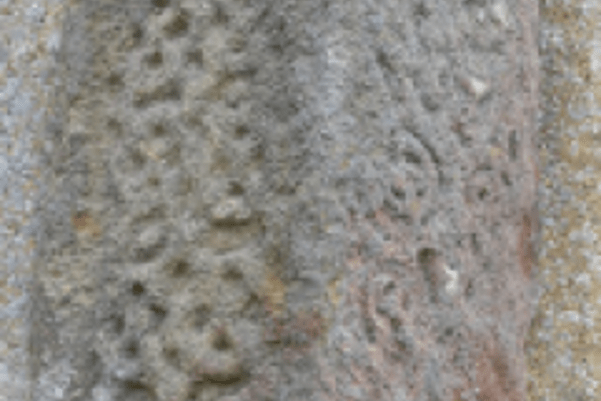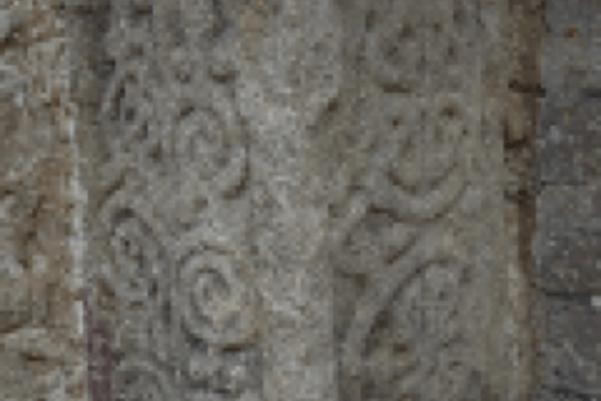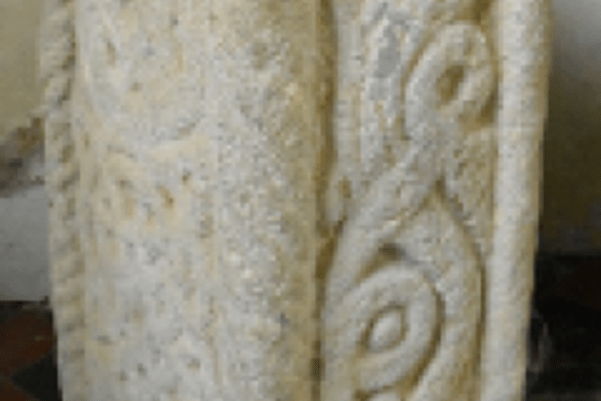Remarkable Anglo-Saxon carved stone found concealed in wall of Northamptonshire church tower
This summer our Northampton historic buildings team found a Saxon carved stone, thought to be part of a standing cross, while recording the conservation work of a church tower at Church Stowe, Stowe Nine Churches, Northamptonshire (see our previous blog about the project). In this blog, Historic Building Officer Lauren Wilson tells us more about the stone…
Over the summer we continued to record the conservation works on the tower of Church Stowe, Stowe Nine Churches. As the rendering was removed to reveal the underlying stonework, a Saxon stone was uncovered which has a fascinating history.
Before the work started we knew there was one carved stone within the wall of the tower, and another now inside the church. But we and the many visitors to Stowe Nine Churches over the years didn’t know there was another example hidden underneath the render. This stone has the same design features as the two other stones, which now makes us think that they all came from the same shaft of a tall, free-standing cross.
Standing crosses acted as focal points within the landscape for the Anglo-Saxon people, and this one likely stood close to or inside a church on the site. We think the stone is likely to date from the early 10th century, which may suggest the tower could be older than first thought.
Standing crosses are more common in other parts of the country, so examples like this one are rare in Northamptonshire. The Stowe Nine cross shaft pieces are remarkably similar to one of the only two complete examples in the region at Rothley, Leicestershire. The Rothley Cross has been modelled by Professor Dominic Powlesland, Archaeologist and Digital Recording Specialist, and can be viewed here. It probably dates to the ninth century, and the elements of the cross shaft at Stowe Nine Churches are broadly similar in date (c. AD 900).
The similarities between this cross and the Rothley cross are important as crosses are so rare in this region. Two crosses within 40 miles featuring similar designs could mean they were created by the same craftsmen. Or the Stowe Nine Churches cross could have been made by someone who got the idea for the design after visiting Rothley.
This newly uncovered stone, and its counterparts at Stowe Nine Churches, will feature in a new volume of The Corpus of Anglo Saxon Stone Sculpture, with research funded by the Arts and Humanities Research Council.
MOLA is grateful for the advice and expertise of Professor Jo Story of the University of Leicester, and Professor Rosemary Cramp, DBE, of Durham University. The stone will now be visible as the scaffolding comes down, and the works draw to a close. Our team are now working on writing up this project, with the hope to release more of our findings in the coming months.


